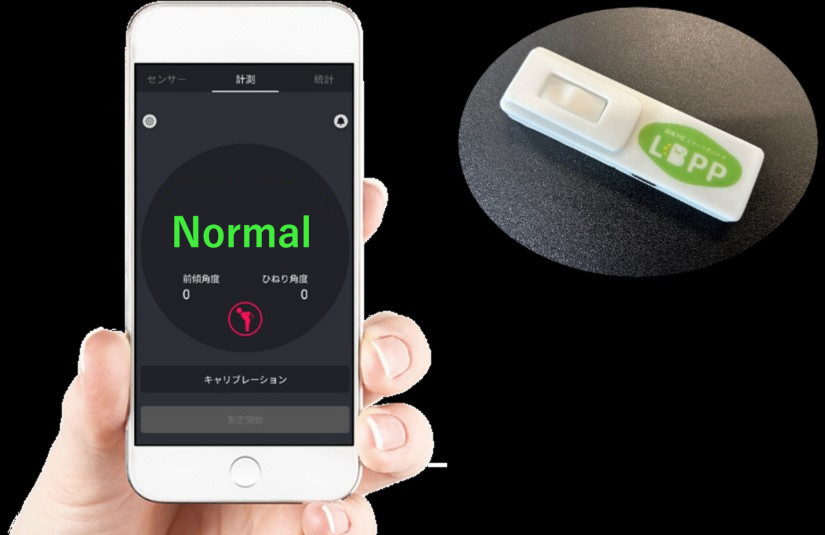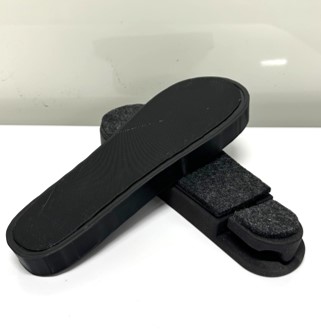What is meant by medical engineering needed in a super-aging society?
As the world’s population has been ageing in recent years, Japan has been a super-aging society since 2010. A super-aging society refers to a society where the population aged 65 or older accounts for more than 21% of the total population. In 2024, 29.3% of Japan’s population was aged 65 or older, and by 2060, this figure is projected to reach approximately 40%.
As the population ages, the decline in people’s physical functions becomes a major social issue. According to a report by the Ministry of Health, Labour and Welfare (MHLW), incidence of musculoskeletal system disorders sharply increase after the age of 50. The musculoskeletal system is a general term for organs related to physical movement such as bones, muscles, joints, and nerves. As people age, their muscular strength declines, making them more prone to leg or lower back injuries when walking and increasing the risk of fractures from falls.
Once hospitalized owing to a fracture, people will rest in bed for a long time, which may lead to a condition called disuse syndrome. This term refers to the fact that people are bedridden for a long time, resulting in a decline in various bodily functions, including muscle strength and even in mental well-being. People with disuse syndrome often cannot return to their normal life even after they leave hospital. For this reason, efforts are underway in the medical field to start rehabilitation as early as possible after surgery to prevent this syndrome.
In addition, as the population ages, the number of people requiring nursing care is increasing. As of fiscal 2022, the number of people certified as requiring nursing care reached approximately 6.9 million, and this figure is expected to continue to rise in the future. On the other hand, there is a shortage of human resources to provide nursing care. Approximately 2.45 million caregivers are required in fiscal year 2025, with the need to secure approximately 60,000 workers per year in the future. This labor shortage is increasing the burden on caregivers and nurses, with lower back pain being a particularly serious problem.
According to a survey by the MHLW, lower back pain accounts for approximately 60% of the reasons why workers miss work for four or more days. Lower back pain that occurs particularly among nurses and caregivers is also called occupational back pain and is a significant issue throughout the industry. Furthermore, in recent years, cases in which an elderly person cares for another elderly person at home have been on the rise, making lower back pain a major problem even within households.
To improve this situation, assistive robots and wearable power assist robots have been developed around the world. Wearable power assist robots are a type of robot designed to support human strength. In daily life and in the industrial field, these robots play a role in enhancing human capabilities when lifting human legs or arms, lifting objects, and performing tasks. There are types that can be attached to human arms, hands, or legs.
Many of these robots use various sensors (touch sensors, speed sensors, sensors that read weak electrical signals in muscles, etc.) to read the wearer’s intention to move, and activate motors accordingly to assist movements of human knees or arms.
In our research, we place emphasis not on robots completely replacing human movements, but on robots assisting human strength. This is because, if robots were to support all movements of a human user, the muscle strength of the user would deteriorate, leading to a decline in motor functions. This would lead to a decline in quality of life (QOL), and we believe it is important to provide support while leaving an appropriate amount of load on the user.
A smart device for preventing lower back pain in the field of caregiving and nursing
I originally started researching robots at university because I wanted to develop cool robots like wearable power assist robots to help people in need. To achieve that goal, I studied diligently and spent my school life repeatedly coming up with various ideas through trial and error.
One day, I had the opportunity to speak with some hospital staff and physically disabled people. When I asked them what they thought of a particular type of robot that I had in mind, they asked me in return questions such as “What kind of patient and what symptoms is the robot intended for?,” “Will the robot be effective for patients with severe pain or only for those with minor pain?” and “What exactly does the robot do and what benefits does it bring to the wearer?” These questions left me quite confused.
Helping people is no easy task. Easier said than done, as they say. I asked myself whether the robot that I was working on could really help people. I was not sure about it, and I keenly felt the need to review the direction of my research.
Currently, we are developing a smart device to prevent lower back pain for nurses and caregivers suffering from the pain in collaboration with the School of Human Nursing of another university, hospitals, and nursing care facilities.

When you hear about a device for preventing back pain, you might imagine a large wearable robot that assists you when you exert force. However, many nurses and caregivers in the field say that it is difficult to work with a large device on.
That is why we have developed a device small enough to fit in a breast pocket. The device constantly monitors the wearer’s posture and emits an alert through a connected smartphone when the wearer adopts a posture that strains the lower back (specifically, excessive forward leaning or twisting). The concept behind the device is not to have the robot assist in stretching the spine, but to enable the wearer to recognize postures that strain the lower back.
In addition, the device can visualize at which times of the day the wearer adopts stressful postures most often and provide feedback to improve postures during daily work. This enables the wearer to be mindful of avoiding stressful postures, which is expected to lead to improvement and prevention of lower back pain.
An insole-type device for walking to improve QOL
Falls among the elderly are a pressing issue in the medical and rehabilitation fields. This is because falls can cause fractures and bedridden conditions, resulting in a decline in QOL.
However, many people feel uncomfortable wearing a robot to help them walk when they go out. Such being the case, we devised a more discreet and practical solution in the form of an insole-type device that can be worn inside shoes.
It is well-known that walking is extremely important for sustainably improving QOL, but the reality is that many elderly people experience knee pain even after a short walk. One of the reasons is that they cannot maintain a normal walking posture owing to a decline in muscle strength.
In fact, if the soles of your usual shoes are worn down only on the inside or outside, this is a condition known as an inversion or eversion of the foot, indicating an abnormal walking posture. If the impact, which should typically be absorbed through ground contact at the center of the foot, is directly applied to the knee, it may lead to degeneration, deformity, and pain in the knee joint.
Many young people have enough muscle strength and rarely feel pain while walking, but elderly people tend to walk with an abnormal gait and may develop osteoarthritis of the knee, making walking itself difficult.

To solve this problem, we have developed an insole-type device that automatically tilts the ankle according to walking conditions, ensuring the heel is always guided to the neutral position when it touches the ground. When the feet touch the ground at the correct angle, the posture is corrected so that the impact of walking is evenly distributed, which can prevent an abnormal gait and reduce or eliminate knee pain.
We believe that our device will not only improve the QOL of elderly people, but will also be effective in preventing young people from walking improperly. Currently, we are collaborating with medical departments at other universities to conduct clinical trials, while also partnering with companies to advance research aimed at practical applications, such as making the device more compact and resolving power supply issues.
Aiming for manufacturing that is not self-satisfying by combining engineering and medicine
When we, as engineers, make a robot or device that supports people, we first consider which parts of their body we want to assist and with what functions. Once we have determined the specific method of assistance, we create drawings, select motors and parts, study control methods, decide how to integrate them into the robot or device, and examine whether there are issues with strength and durability.
Once a prototype is completed to a certain extent, we test it on healthy subjects. After verifying that it is effective, we test it on actual patients to evaluate whether it has achieved the intended assistance.
Now, is the robot or device developed that way something that people really want to use? Aren’t we just making what we want to make?
People who actually use a robot or device want first to solve their current physical problems. They go to the hospital because they have pain in their legs or lower back, and they consider using a robot or device to alleviate that pain. In addition, it is not just any robot or device that will suffice; people will only want to use a robot or device if it is attractive, comfortable, cost-effective, and, most importantly, compatible with their unique living environment.
I believe that, to prevent us engineers from becoming self-satisfied with making what we want to make, we must manufacture products taking into account various perspectives, including the future lives of users.
For this purpose, we are working with hospital staff, including nurses, from the development stage to promote manufacturing through medical and engineering collaboration. I myself am currently studying medicine at graduate school so that I will not think only from the engineering perspective.
At graduate school, I major in orthopedics and rehabilitation, studying human mechanisms from the perspective of functional anatomy. I also have participated in anatomy training. With the knowledge and experience that I have gained, I would like to continue to manufacture products that people genuinely need.
* The information contained herein is current as of February 2025.
* The contents of articles on Meiji.net are based on the personal ideas and opinions of the author and do not indicate the official opinion of Meiji University.
* I work to achieve SDGs related to the educational and research themes that I am currently engaged in.
Information noted in the articles and videos, such as positions and affiliations, are current at the time of production.

